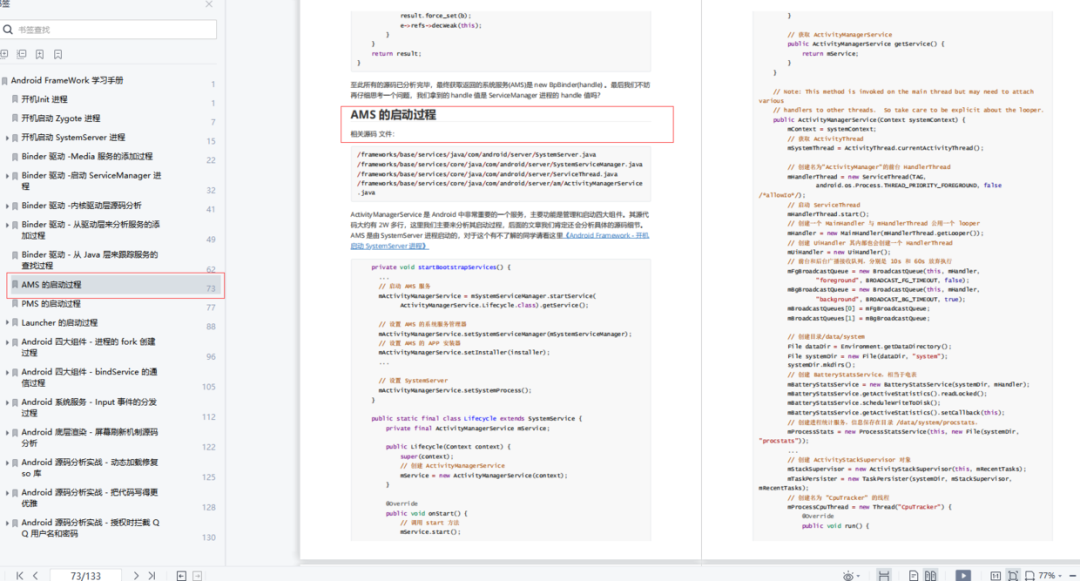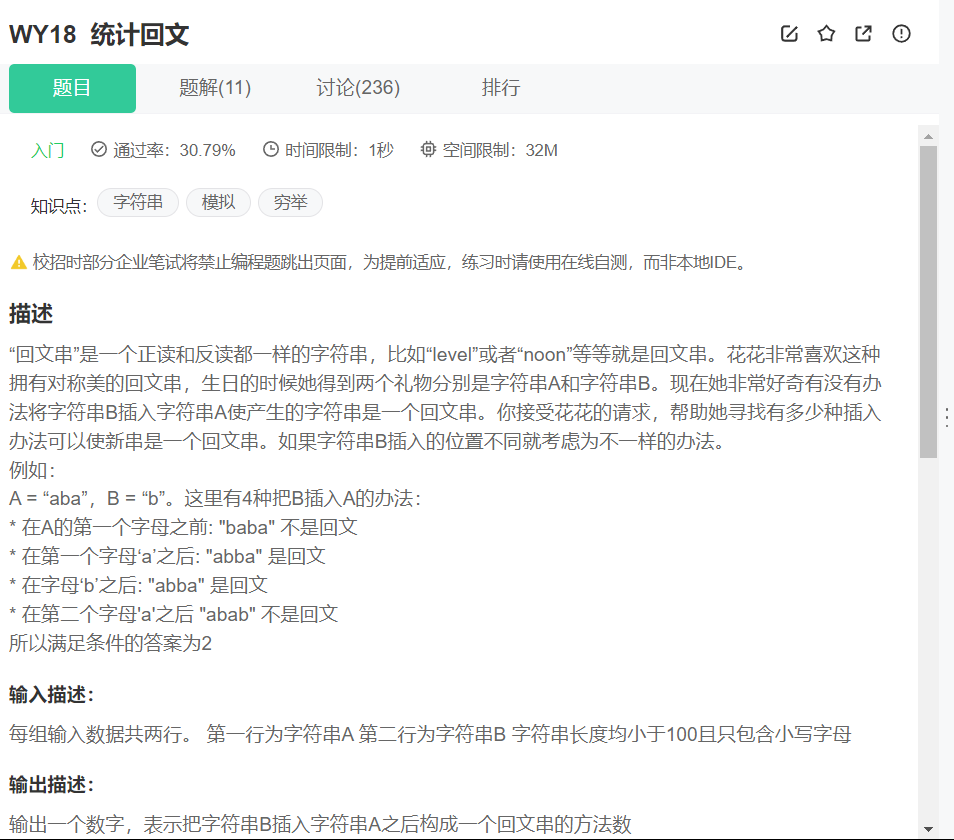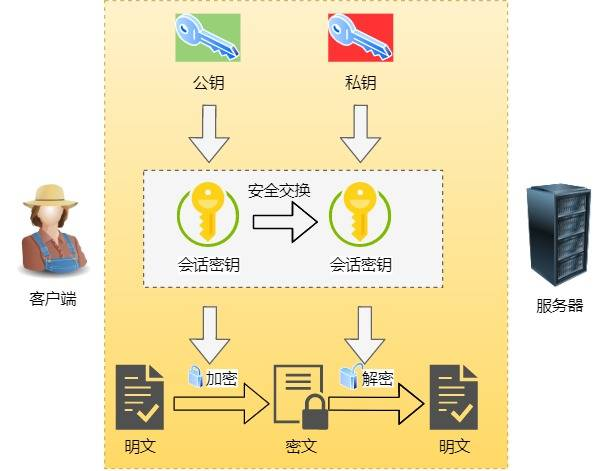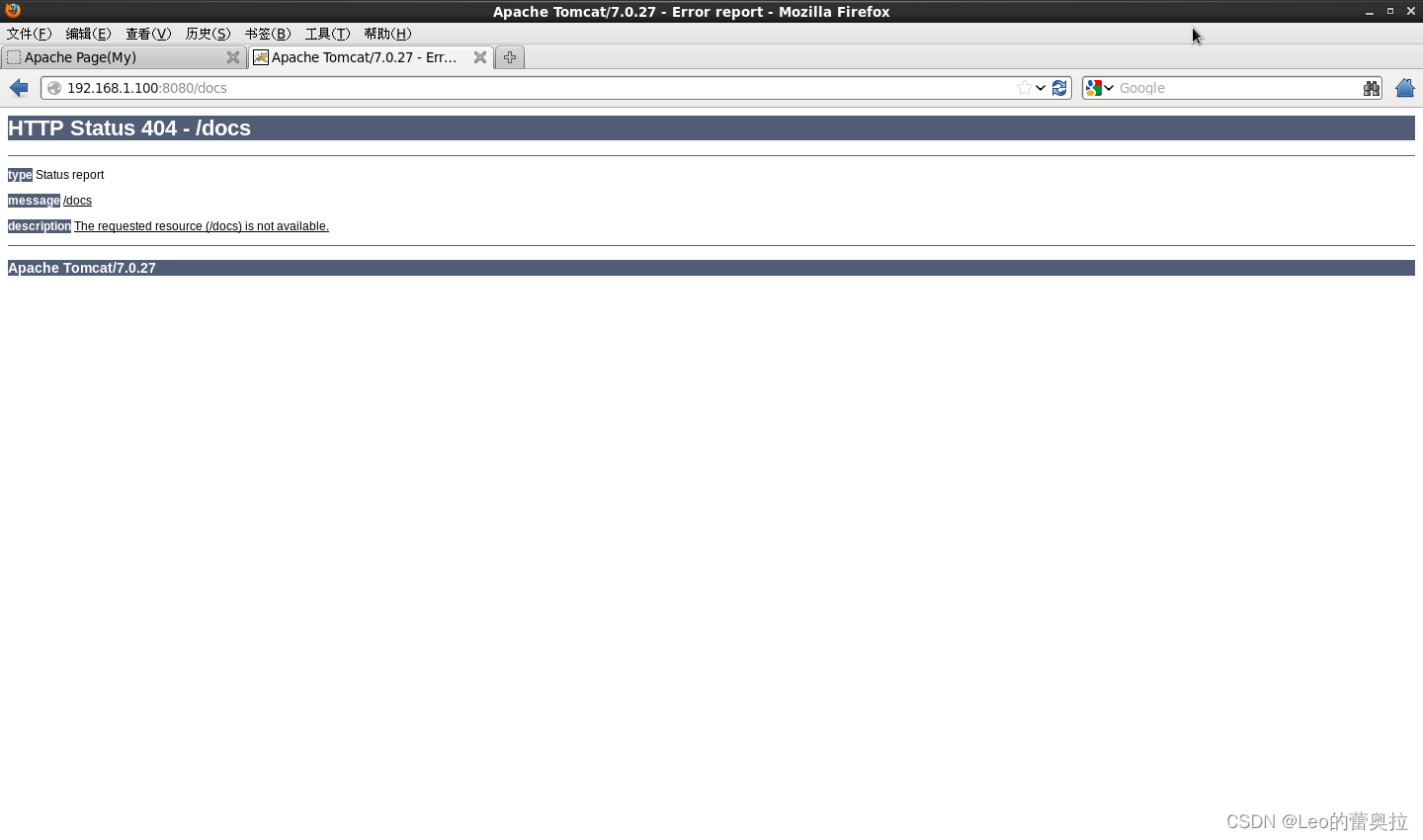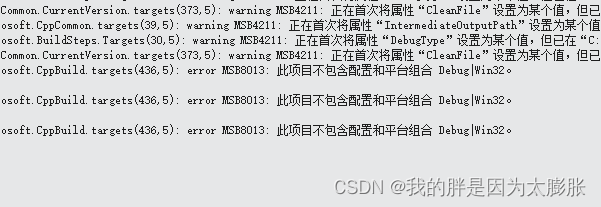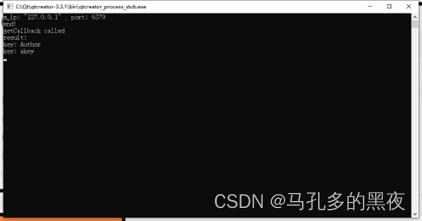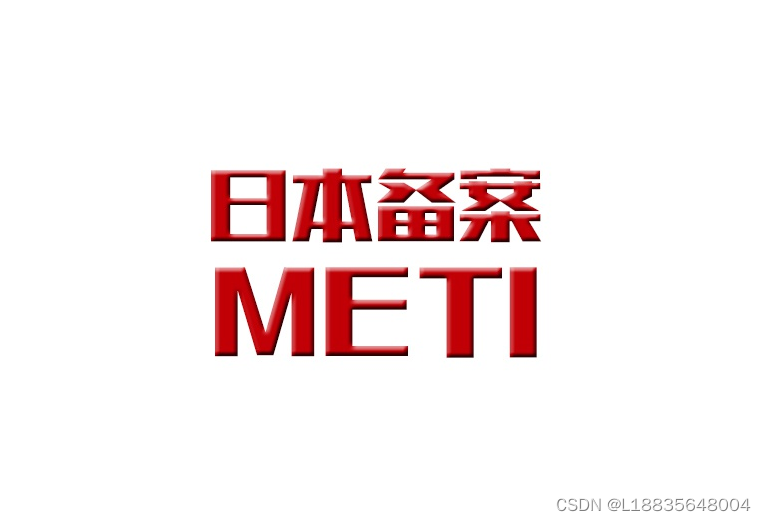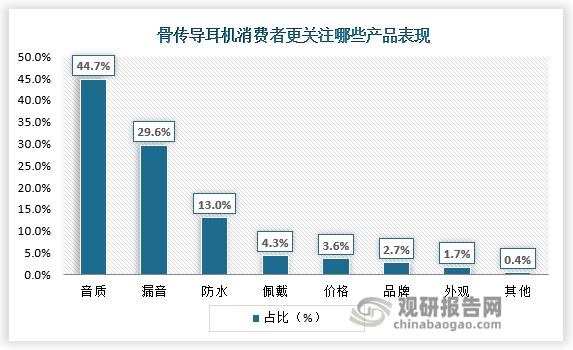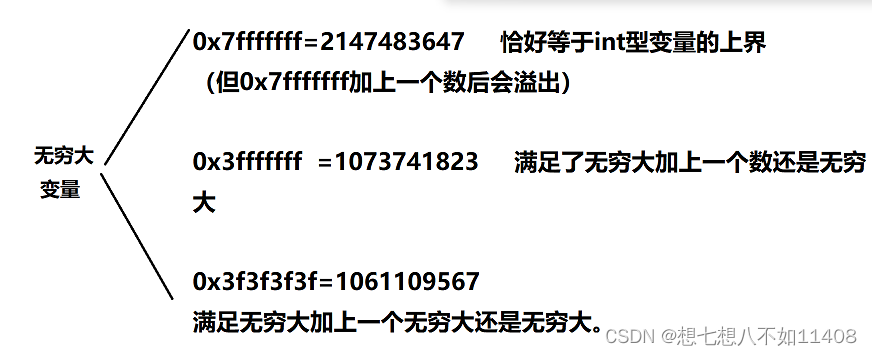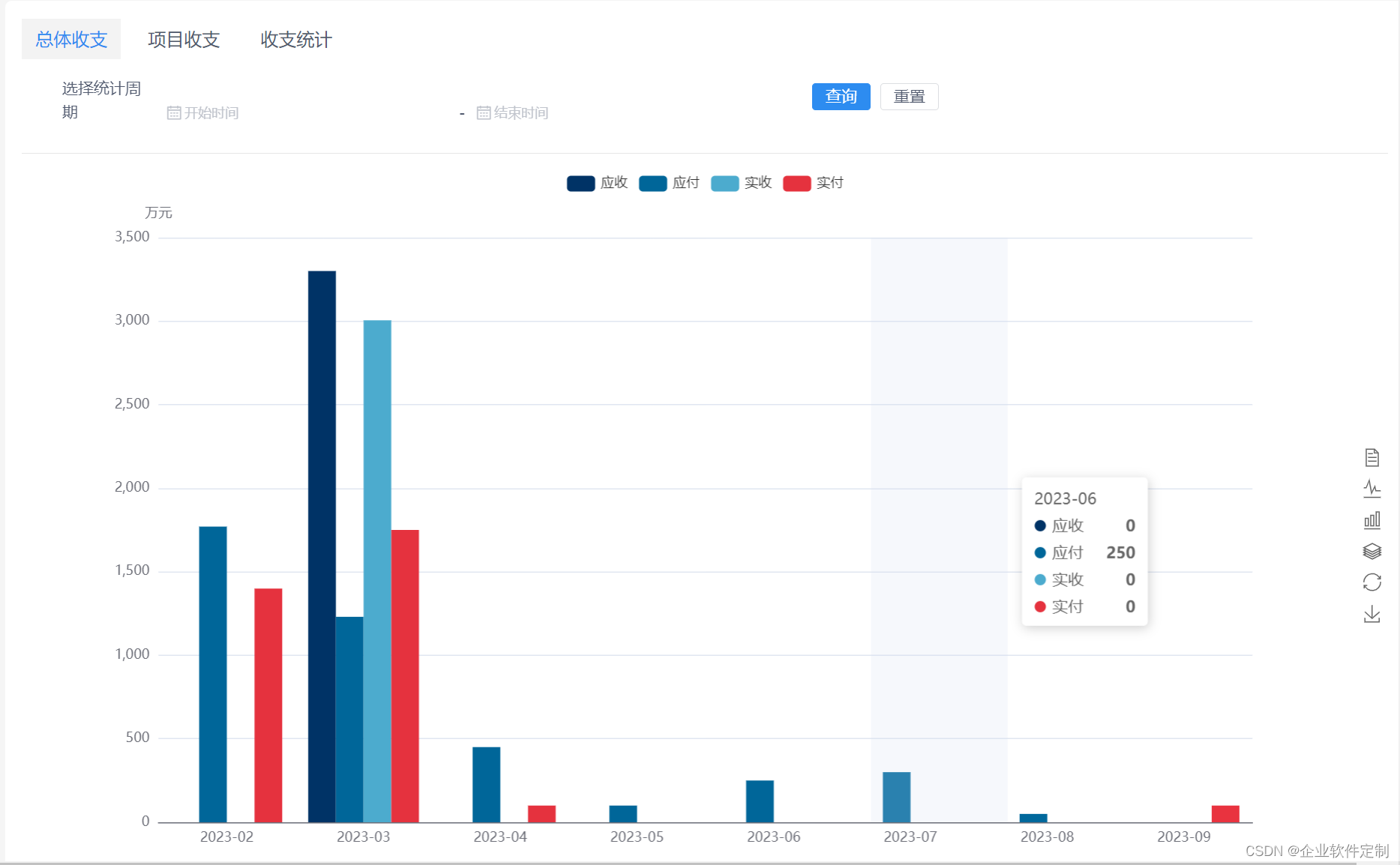文章目录
- 前言
- 一、单一职责 🍧
- 1、单一职责原则注意事项和细节
- 2、代码实现
- 2、1 错误示例
- 2、2 正确示例但有缺陷
- 2、3 最终形态
- 二、接口隔离原则 🥩
- 1、代码示例
- 三、依赖倒转原则 🥥
- 1、代码示例
- 2、依赖关系传递的三种方式
- 四、里氏替换原则 🍇
- 问题的引出:子类无意间重写了父类的方法导致业务逻辑发生错误
- 解决方案:继承同一基类,使用组合
- 五、开闭原则 🐷
- 方式1
- 方式 1 的缺点
- 方式2 进行改进
- 六、迪米特法则 🌍
- 错误示例
- 正确示例
- 七、合成复用原则 🚑
- 总结 : 设计原则核心思想 🔞
前言

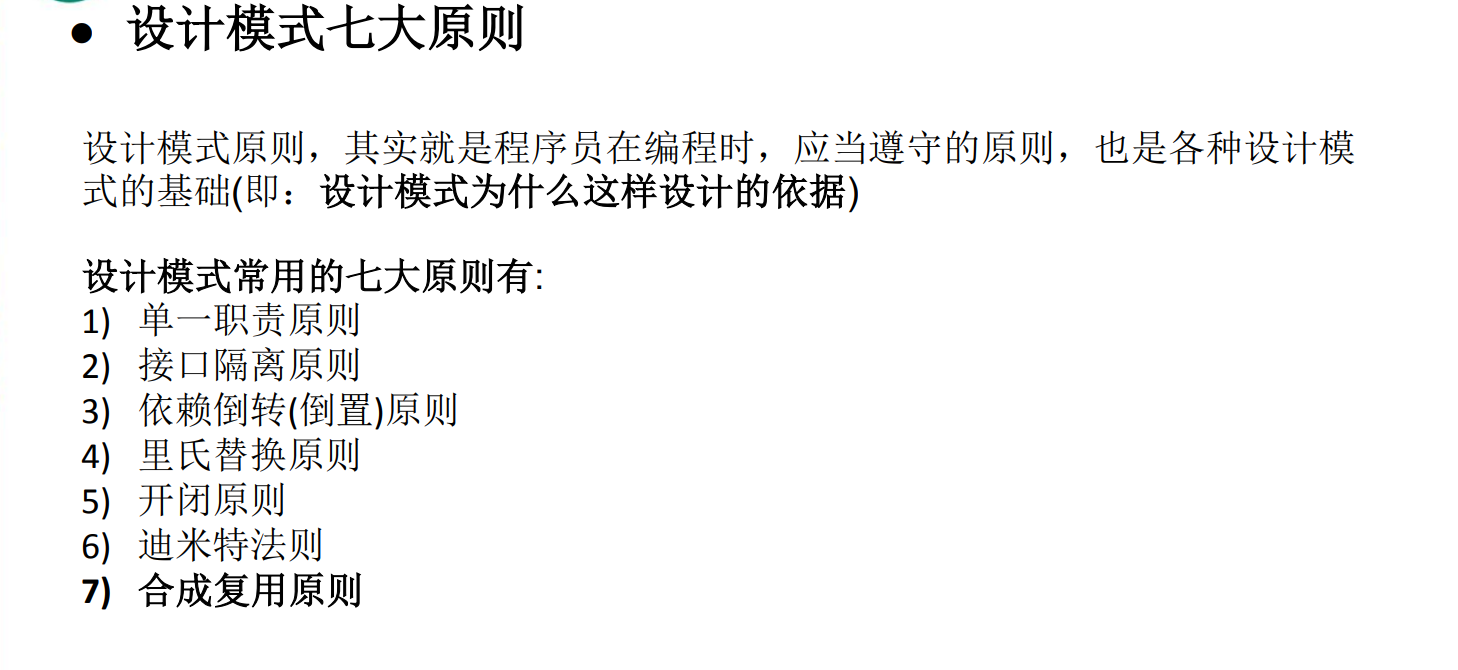
设计模式原则,其实就是程序员在编程时,应当遵守的原则,也是各种设计模式的基础(即:设计模式为什么这样设计的依据) 设计模式常用的七大原则有:
1、单一职责原则 ,2、 接口隔离原则,3、依赖倒转(倒置)原则,4、里氏替换原则,5、开闭原则,6、 迪米特法则,7、 合成复用原则
一、单一职责 🍧
对类来说的,即一个类应该只负责一项职责。如类A 负责两个不同职责: 职责 1,职责 2。当职责1需求变更而改变 A 时,可能造成职责 2 执行错误,所以需要将类 A 的粒度分解为 A1,A2。
例如我们平常用来操作数据库的实体类,每个实体类都对应着一张表,这就体现出了单一职责的各司其职。controller和service也都是一一对应各司其职,也是单一职责的表现
1、单一职责原则注意事项和细节
- 降低类的复杂度,一个类只负责一项职责。
- 提高类的可读性,可维护性
- 降低变更引起的风险
- 通常情况下,我们应当遵守单一职责原则,只有逻辑足够简单,才可以在代码级违反单一职责原则;只有类中方法数量足够少,可以在方法级别保持单一职责原则
2、代码实现
2、1 错误示例
public class SingleResponsibility1 {
public static void main(String[]{
Vehicle vehicle = new Vehicle();
vehicle.run("摩托车");
vehicle.run("汽车");
vehicle.run("飞机");
}
}
// 交通工具类
// 方式 1
// 1. 在方式 1 的 run 方法中,违反了单一职责原则
// 2. 解决的方案非常的简单,根据交通工具运行方法不同,分解成不同类即可
class Vehicle {
public void run(String vehicle) {
System.out.println(vehicle + " 在公路上运行....");
}
}
2、2 正确示例但有缺陷
public class SingleResponsibility2 {
public static void main(String[] args){
RoadVehicle roadVehicle = new RoadVehicle();
roadVehicle.run("摩托车");
roadVehicle.run("汽车");
AirVehicle airVehicle = new AirVehicle();
airVehicle.run("飞机");
}
}
//方案 2 的分析
//1. 遵守单一职责原则
//2. 但是这样做的改动很大,即将类分解,同时修改客户端
//3. 改进:直接修改 Vehicle 类,改动的代码会比较少=>方案 3
class RoadVehicle {
public void run(String vehicle) {
System.out.println(vehicle + "公路运行");
}
}
class AirVehicle {
public void run(String vehicle) {
System.out.println(vehicle + "天空运行");
}
}
class WaterVehicle {
public void run(String vehicle) {
System.out.println(vehicle + "水中运行");
}
}
2、3 最终形态
public class SingleResponsibility3 {
public static void main(String[] args) {
Vehicle2 vehicle2 = new Vehicle2();
vehicle2.run("汽车");
vehicle2.runWater("轮船");
vehicle2.runAir("飞机");
}
}
//方式 3的分析
//1. 这种修改方法没有对原来的类做大的修改,只是增加方法
//2. 这里虽然没有在类这个级别上遵守单一职责原则,但是在方法级别上,仍然是遵守单一职责
class Vehicle2 {
public void run(String vehicle) {
//处理
System.out.println(vehicle + " 在公路上运行....");
}
public void runAir(String vehicle) {
System.out.println(vehicle + " 在天空上运行....");
}
public void runWater(String vehicle) {
System.out.println(vehicle + " 在水中行....");
}
}
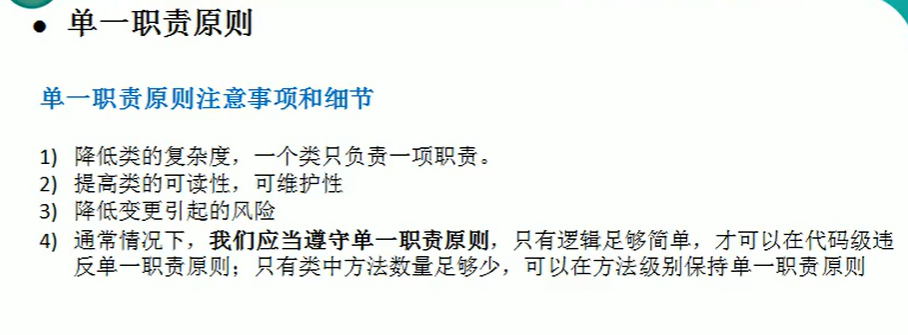
二、接口隔离原则 🥩


1、代码示例
package shejimoshi;
public class test1 {
public static void main(String[] args) {
// TODO Auto-generated method stub
// 使用一把
A a = new A();
a.depend1(new B()); // A 类通过接口去依赖 B 类
a.depend2(new B());
a.depend3(new B());
C c = new C();
c.depend1(new D()); // C 类通过接口去依赖(使用)D 类
c.depend4(new D());
c.depend5(new D());
}
}
// 接口 1
interface Interface1 {
void operation1();
}
// 接口 2
interface Interface2 {
void operation2();
void operation3();
}
// 接口 3
interface Interface3 {
void operation4();
void operation5();
}
class B implements Interface1, Interface2 {
@Override
public void operation1() {
System.out.println("B 实现了 operation1");
}
@Override
public void operation2() {
System.out.println("B 实现了 operation2");
}
@Override
public void operation3() {
System.out.println("B 实现了 operation3");
}
}
class D implements Interface1, Interface3 {
@Override
public void operation1() {
System.out.println("D 实现了 operation1");
}
@Override
public void operation4() {
System.out.println("D 实现了 operation4");
}
@Override
public void operation5() {
System.out.println("D 实现了 operation5");
}
}
class A { // A 类通过接口 Interface1,Interface2 依赖(使用) B 类,但是只会用到 1,2,3 方法
public void depend1(Interface1 i) {
i.operation1();
}
public void depend2(Interface2 i) {
i.operation2();
}
public void depend3(Interface2 i) {
i.operation3();
}
}
class C { // C 类通过接口 Interface1,Interface3 依赖(使用) D 类,但是只会用到 1,4,5 方法
public void depend1(Interface1 i) {
i.operation1();
}
public void depend4(Interface3 i) {
i.operation4();
}
public void depend5(Interface3 i) {
i.operation5();
}
}
输出
B 实现了 operation1
B 实现了 operation2
B 实现了 operation3
D 实现了 operation1
D 实现了 operation4
D 实现了 operation5
三、依赖倒转原则 🥥
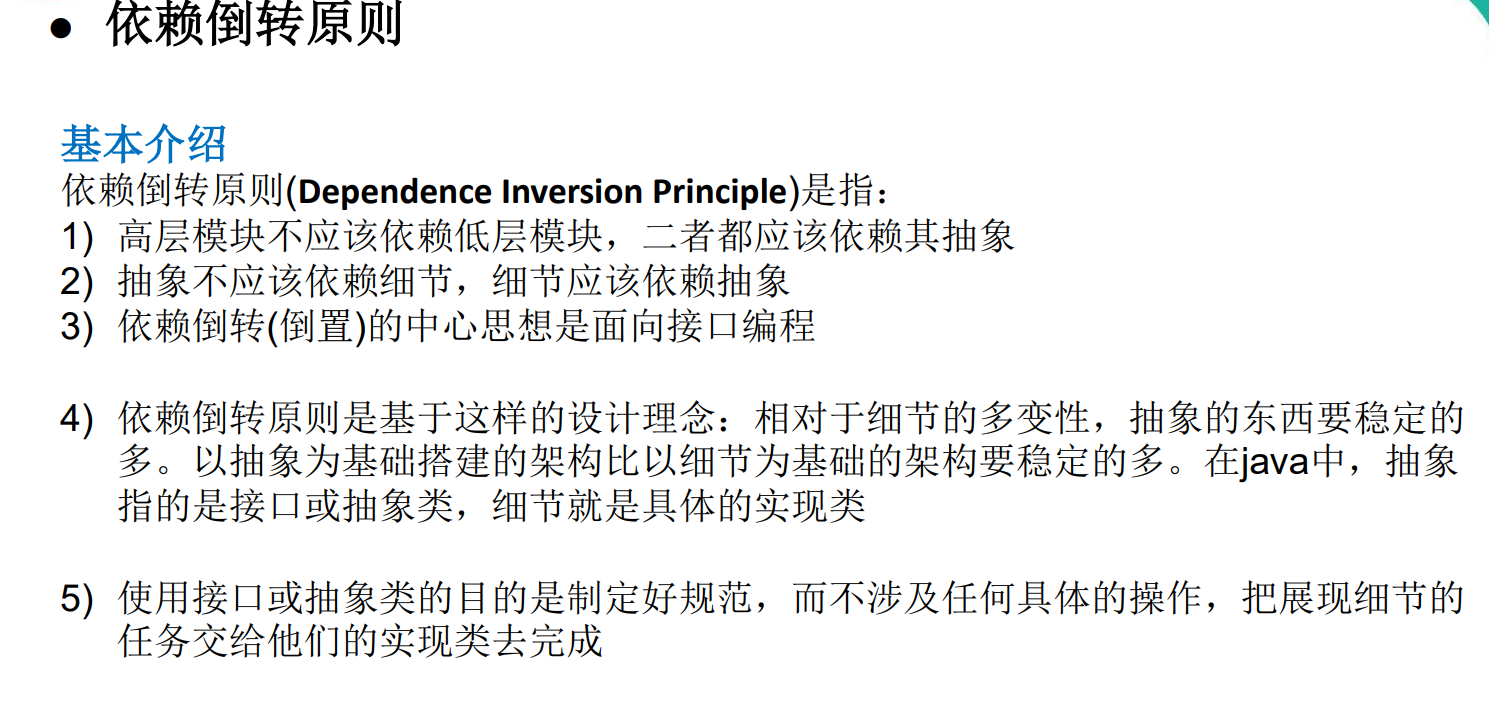
1、代码示例
正常代码,没有加入设计模式
//完成 Person 接收消息的功能
//方式 1 分析
//1. 简单,比较容易想到
//2. 如果我们获取的对象是 微信,短信等等,则新增类,同时 Perons 也要增加相应的接收方法
//3. 解决思路:引入一个抽象的接口 IReceiver, 表示接收者, 这样 Person 类与接口 IReceiver 发生依赖
// 因为 Email, WeiXin 等等属于接收的范围,他们各自实现 IReceiver 接口就 ok, 这样我们就符合依赖倒转原则
package shejimoshi;
public class test2 {
public static void main(String[] args) {
Person person = new Person();
person.receive(new Email());
}
}
class Email {
public String getInfo() {
return "电子邮件信息: hello,world";
}
}
//完成 Person 接收消息的功能
//方式 1 分析
//1. 简单,比较容易想到
//2. 如果我们获取的对象是 微信,短信等等,则新增类,同时 Perons 也要增加相应的接收方法
//3. 解决思路:引入一个抽象的接口 IReceiver, 表示接收者, 这样 Person 类与接口 IReceiver 发生依赖
// 因为 Email, WeiXin 等等属于接收的范围,他们各自实现 IReceiver 接口就 ok, 这样我们就符合依赖倒转原则
class Person {
public void receive(Email email ) {
System.out.println(email.getInfo());
}
}
输出
电子邮件信息: hello,world
加入设计模式,依赖倒转原则
package shejimoshi;
public class test2 {
public static void main(String[] args) {
//客户端无需改变
Person person = new Person();
person.receive(new Email());
person.receive(new WeiXin());
}
}
//定义接口
interface IReceiver {
public String getInfo();
}
//增加微信
class WeiXin implements IReceiver {
public String getInfo() {
return "微信信息: hello,ok";
}
}
class Email implements IReceiver {
public String getInfo() {
return "电子邮件信息: hello,world";
}
}
class Person {
public void receive(IReceiver iReceiver ) {
System.out.println(iReceiver.getInfo());
}
}
输出
电子邮件信息: hello,world
微信信息: hello,ok
2、依赖关系传递的三种方式
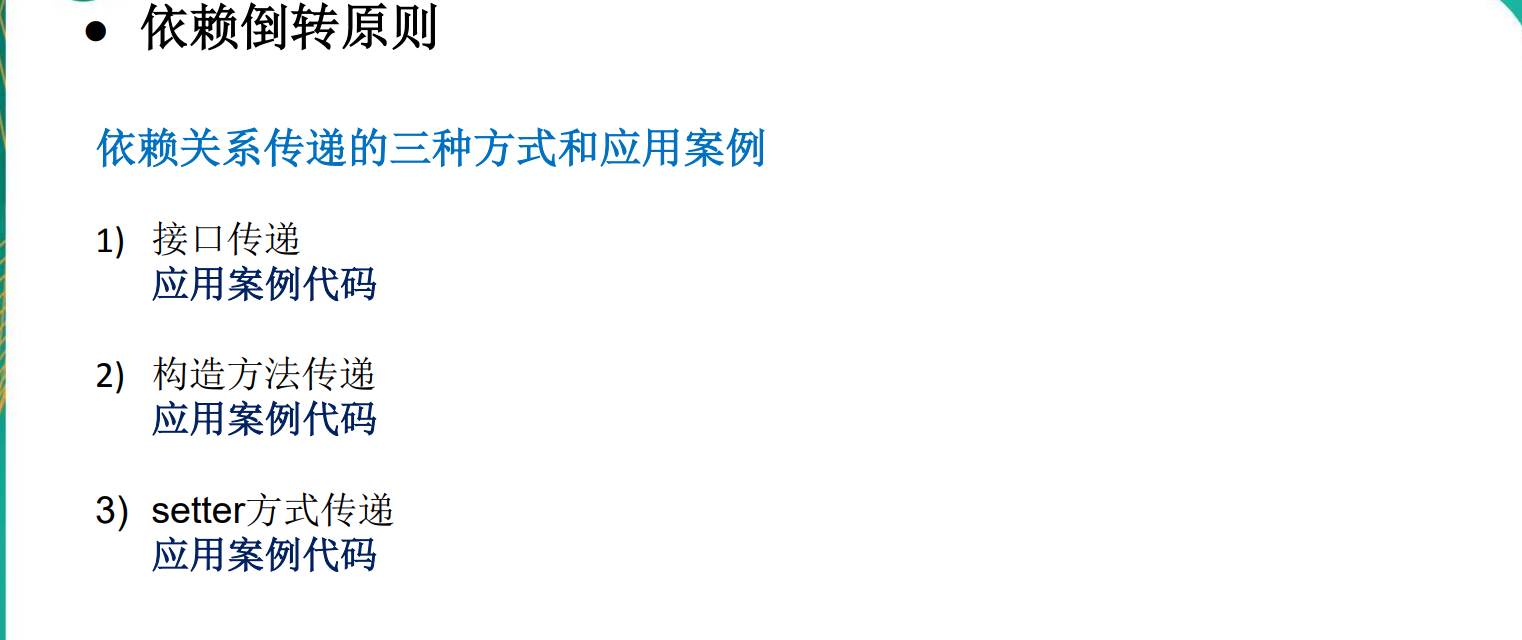
三种方式代码示例
package shejimoshi;
public class DependencyPass {
public static void main(String[] args) {
// TODO Auto-generated method stub
ChangHong changHong = new ChangHong();
OpenAndClose openAndClose = new OpenAndClose();
openAndClose.open(changHong);
//通过构造器进行依赖传递
// OpenAndClose openAndClose = new OpenAndClose(changHong);
// openAndClose.open();
//通过 setter 方法进行依赖传递
// OpenAndClose openAndClose = new OpenAndClose();
// openAndClose.setTv(changHong);
// openAndClose.open();
}
}
// 方式 1: 通过接口传递实现依赖
// 开关的接口
interface IOpenAndClose {
public void open(ITV tv); //抽象方法,接收接口
}
interface ITV { //ITV 接口
public void play();
}
//class ChangHong implements ITV {
//
// @Override
// public void play() {
// // TODO Auto-generated method stub
// System.out.println("长虹电视机,打开");
// }
//
//}
// 实现接口
class OpenAndClose implements IOpenAndClose{
public void open(ITV tv){
tv.play();
}
}
// 方式 2: 通过构造方法依赖传递
//interface IOpenAndClose {
// public void open(); //抽象方法
//}
//interface ITV { //ITV 接口
// public void play();
//}
//class OpenAndClose implements IOpenAndClose{
// public ITV tv; //成员
// public OpenAndClose(ITV tv){ //构造器
// this.tv = tv;
// }
// public void open(){
// this.tv.play();
// }
//}
// 方式 3 , 通过 setter 方法传递
//interface IOpenAndClose {
// public void open(); // 抽象方法
// public void setTv(ITV tv);
//}
//interface ITV { // ITV 接口
// public void play();
//}
//class OpenAndClose implements IOpenAndClose {
// private ITV tv;
// public void setTv(ITV tv) {
// this.tv = tv;
// }
// public void open() {
// this.tv.play();
// }
//}
class ChangHong implements ITV {
@Override
public void play() {
// TODO Auto-generated method stub
System.out.println("长虹电视机,打开");
}
}
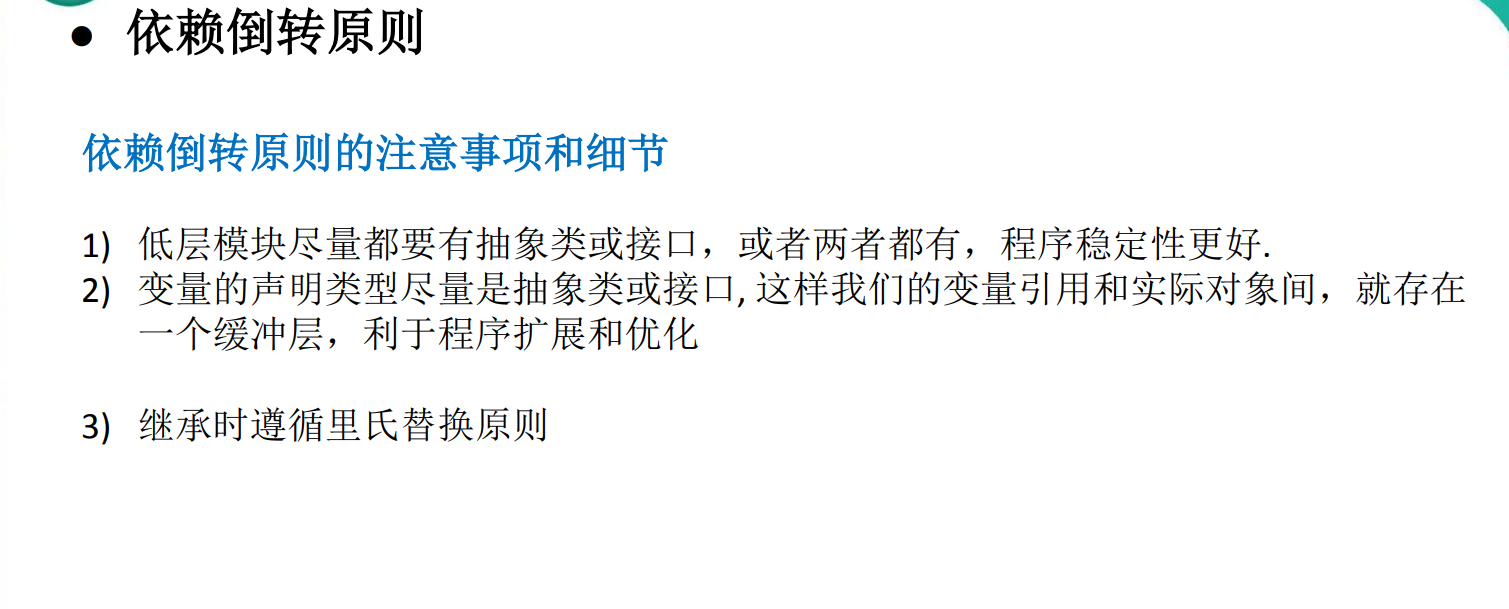
四、里氏替换原则 🍇
我们在写代码的平常,很多地方会用到继承,这大大便利了我们程序的便利,但也带来了很多弊端,父类的修改可能会造成子类的故障,子类继承父类重写父类的方法后,如果父类进行了修改,就会对继承体系造成一些不可预知的侵入性,这时我们尽量不让子类去重写父类的方法,而是将子类和父类设计为兄长类,平起平坐,把两个类公共的方法抽象成一个抽象类,两个类都去继承抽象类,这样都具有了相同的行为,而一些特有的行为也不会影响到对方。
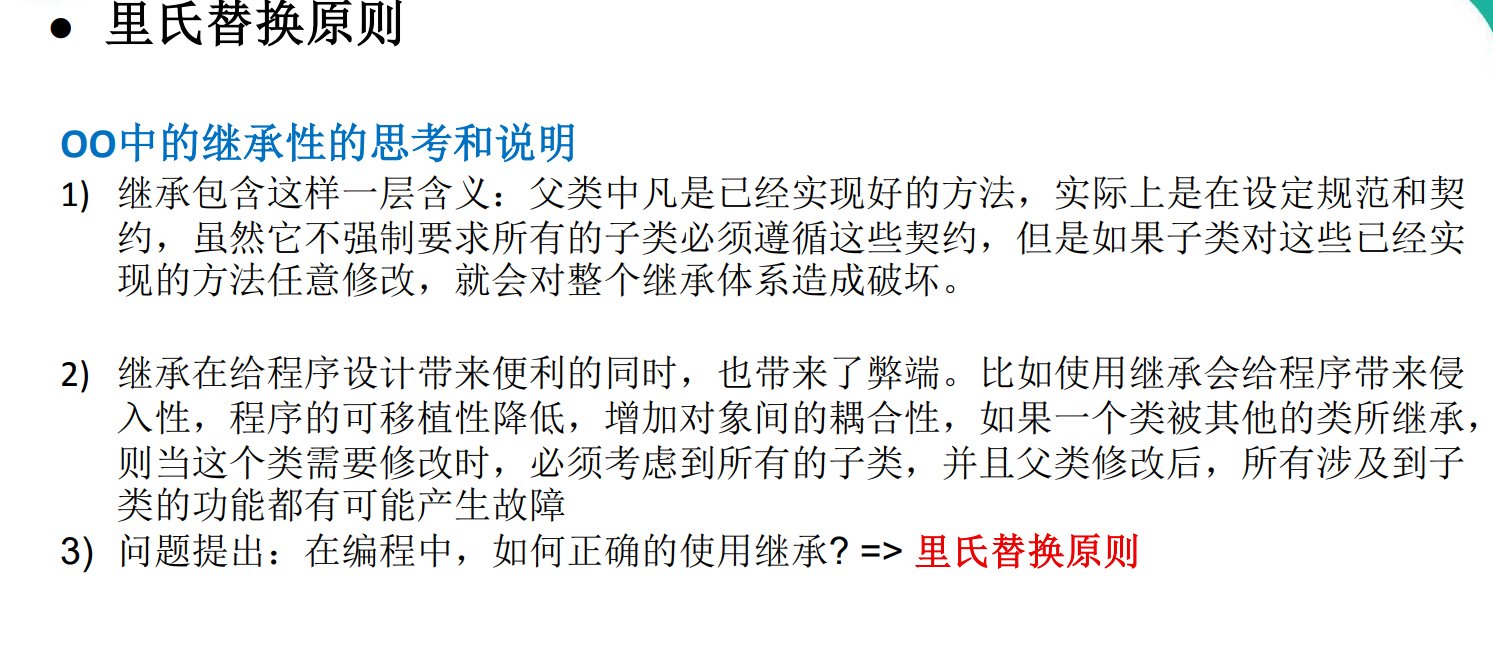
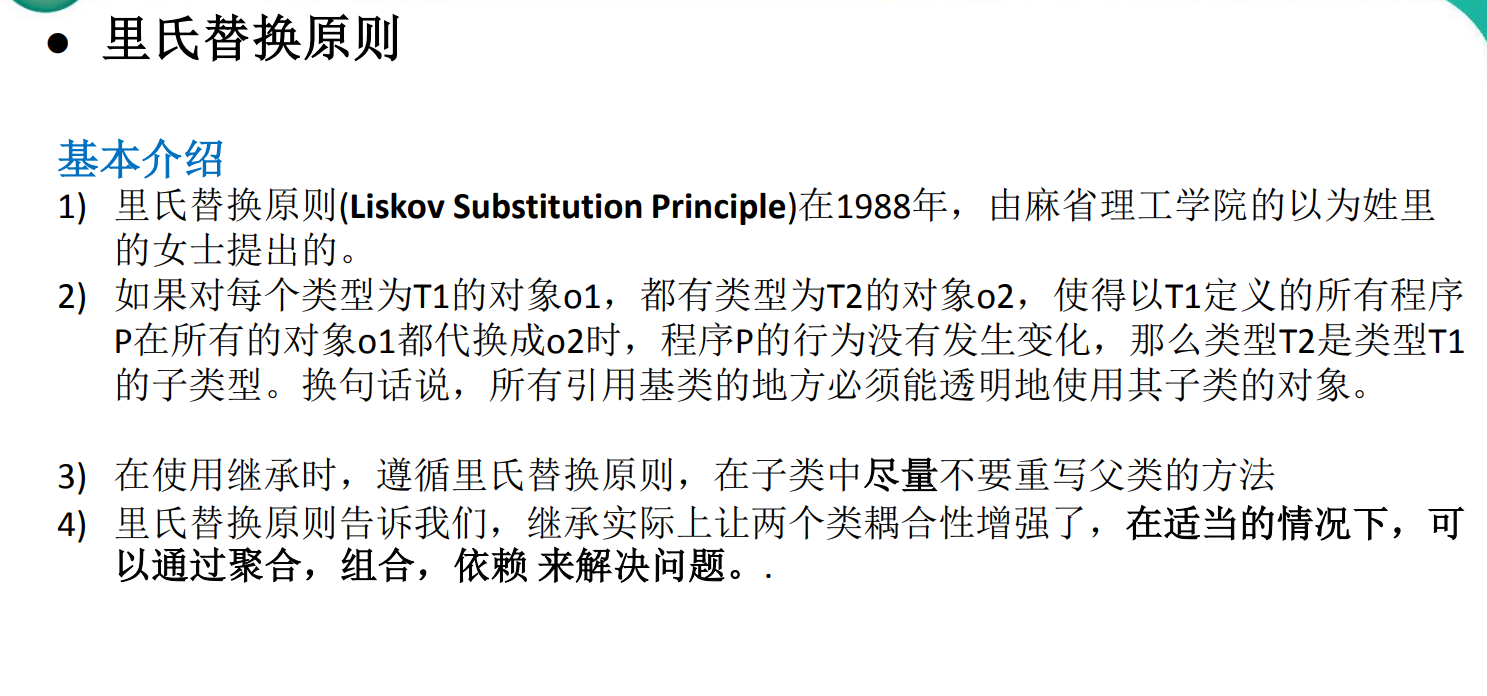
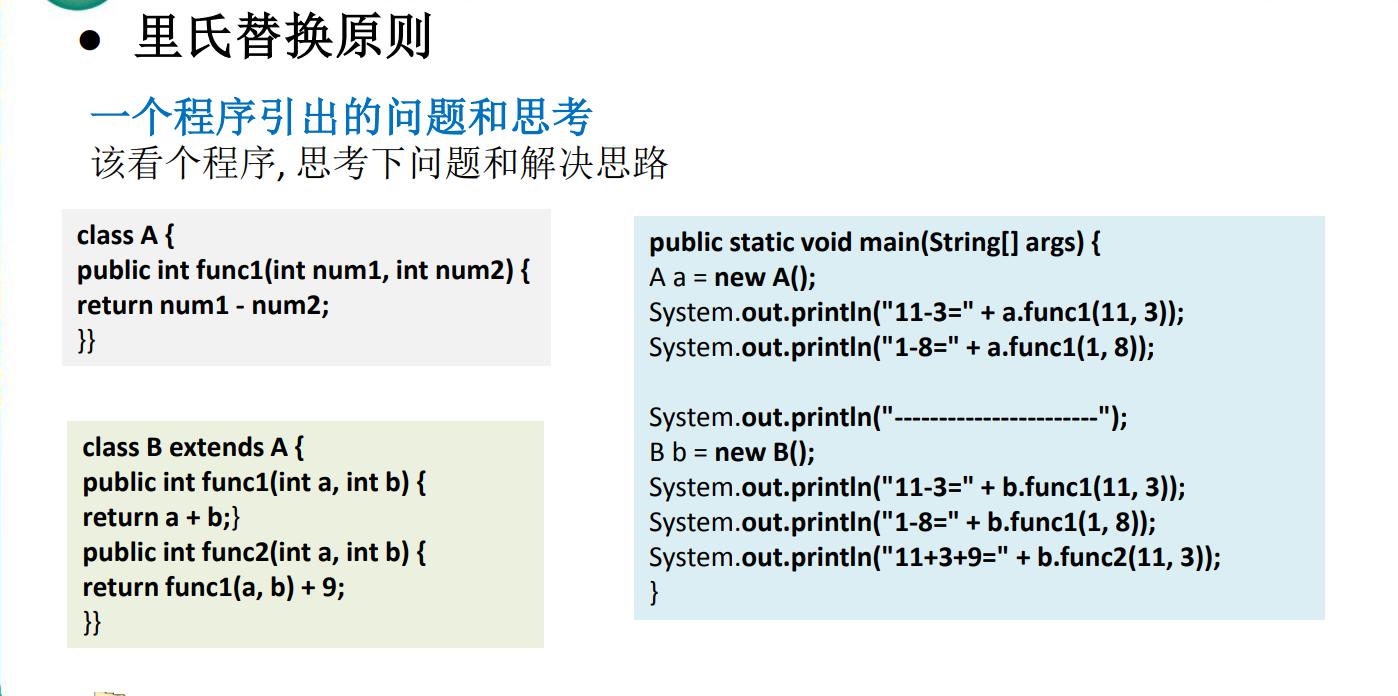
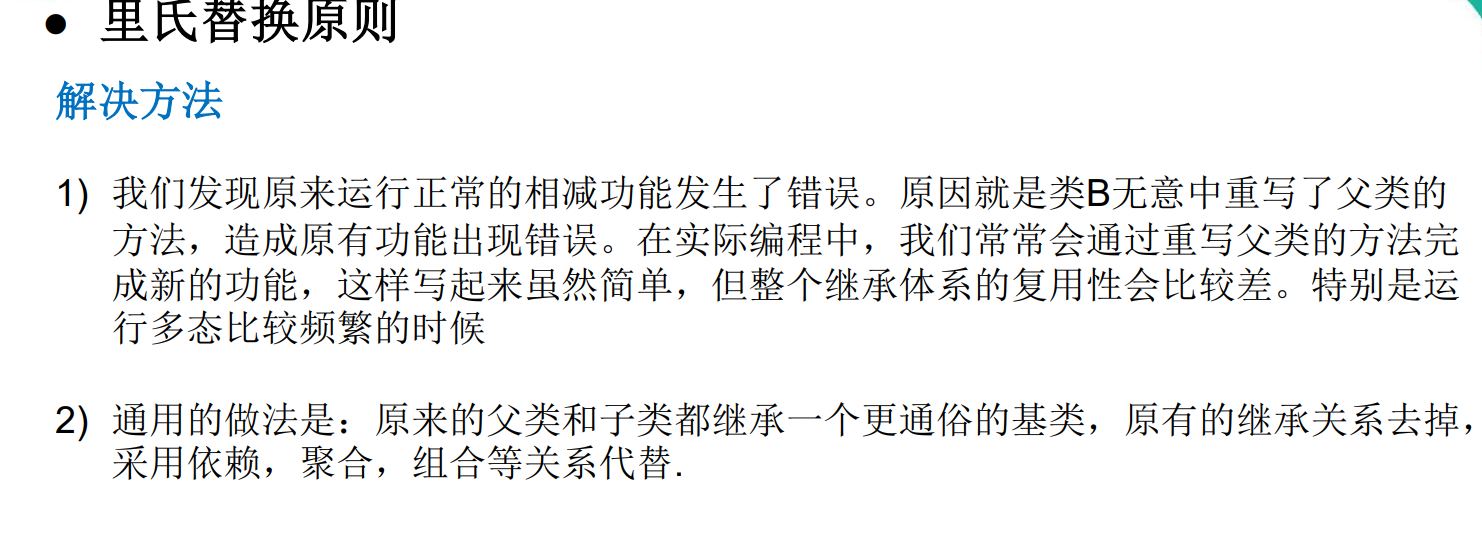
问题的引出:子类无意间重写了父类的方法导致业务逻辑发生错误
package shejimoshi;
public class Liskov {
public static void main(String[] args) {
// TODO Auto-generated method stub
A a = new A();
System.out.println("11-3=" + a.func1(11, 3));
System.out.println("1-8=" + a.func1(1, 8));
System.out.println("-----------------------");
B b = new B();
//这里本意是求出 11-3, 但由于子类不经意间重写了父类的方法,从而产生了不可预知的错误
System.out.println("11-3=" + b.func1(11, 3));
System.out.println("1-8=" + b.func1(1, 8));// 1-8
System.out.println("11+3+9=" + b.func2(11, 3));
}
}
// A 类
class A {
// 返回两个数的差
public int func1(int num1, int num2) {
return num1 - num2;
}
}
// B 类继承了 A
// 增加了一个新功能:完成两个数相加,然后和 9 求和
class B extends A {
//这里,重写了 A 类的方法, 可能是无意识
public int func1(int a, int b) {
return a + b;
}
public int func2(int a, int b) {
return func1(a, b) + 9;
}
}

解决方案:继承同一基类,使用组合
package shejimoshi;
public class Liskov {
public static void main(String[] args) {
// TODO Auto-generated method stub
A a = new A();
System.out.println("11-3=" + a.func1(11, 3));
System.out.println("1-8=" + a.func1(1, 8));
System.out.println("-----------------------");
B b = new B();
System.out.println("11-3=" + b.func1(11, 3));//这里本意是求出 11-3
System.out.println("1-8=" + b.func1(1, 8));// 1-8
System.out.println("11+3+9=" + b.func2(11, 3));
System.out.println("---------使用组合后");
//使用组合仍然可以使用到 A 类相关方法
System.out.println("11-3=" + b.func3(11, 3));// 这里本意是求出 11-
}
}
//创建一个更加基础的基类
class Base {
//把更加基础的方法和成员写到 Base 类
public int func1(int num1, int num2) {
return num1 - num2;
}
}
// A 类
class A extends Base {
// 返回两个数的差
public int func1(int num1, int num2) {
return num1 - num2;
}
}
// B 类继承了 A
// 增加了一个新功能:完成两个数相加,然后和 9 求和
class B extends Base {
//如果 B 需要使用 A 类的方法,使用组合关系
private A a = new A();
//这里,重写了 A 类的方法, 可能是无意识
public int func1(int a, int b) {
return a + b;
}
public int func2(int a, int b) {
return func1(a, b) + 9;
}
//我们仍然想使用 A 的方法
public int func3(int a, int b) {
return this.a.func1(a, b);
}
}
输出
11-3=8
1-8=-7
-----------------------
11-3=14
1-8=9
11+3+9=23
---------使用组合后
11-3=8
五、开闭原则 🐷

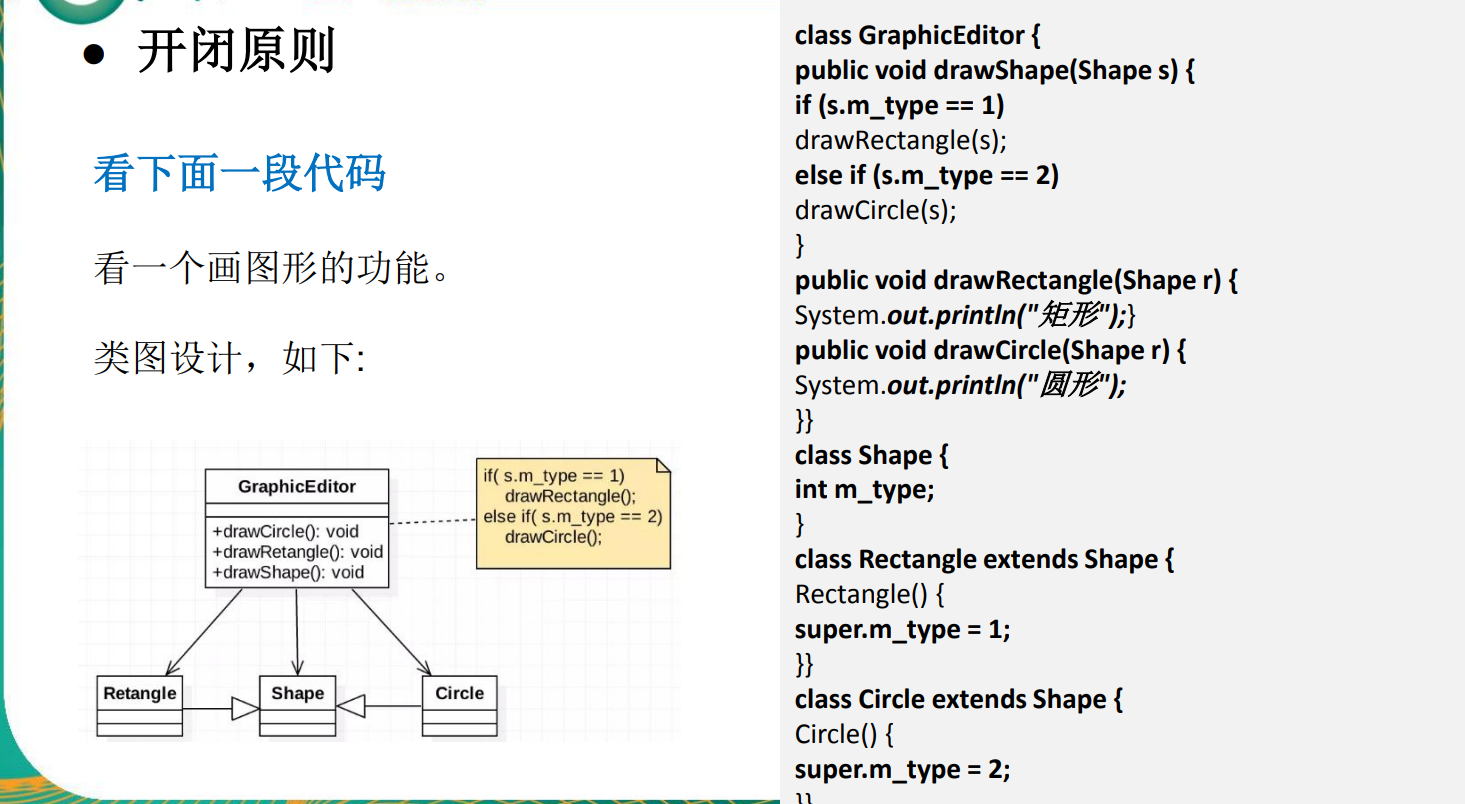
方式1
package tanchishell.SJMS.ocp;
public class Ocp {
public static void main(String[] args) {
//使用看看存在的问题
GraphicEditor graphicEditor = new GraphicEditor();
graphicEditor.drawShape(new Rectangle());
graphicEditor.drawShape(new Circle());
graphicEditor.drawShape(new Triangle());
}
}
//这是一个用于绘图的类 [使用方]
class GraphicEditor {
//接收 Shape 对象,然后根据 type,来绘制不同的图形
public void drawShape(Shape s) {
if (s.m_type == 1)
drawRectangle(s);
else if (s.m_type == 2)
drawCircle(s);
else if (s.m_type == 3)
drawTriangle(s);
}
//绘制矩形
public void drawRectangle(Shape r) {
System.out.println(" 绘制矩形 ");
}
//绘制圆形
public void drawCircle(Shape r) {
System.out.println(" 绘制圆形 ");
}
//绘制三角形
public void drawTriangle(Shape r) {
System.out.println(" 绘制三角形 ");
}
}
//Shape 类,基类
class Shape {
int m_type;
}
class Rectangle extends Shape {
Rectangle() {
super.m_type = 1;
}
}
class Circle extends Shape {
Circle() {
super.m_type = 2;
}
}
//新增画三角形
class Triangle extends Shape {
Triangle() {
super.m_type = 3;
}
}
输出
绘制矩形
绘制圆形
绘制三角形
方式 1 的缺点
- 优点是比较好理解,简单易操作。
- 缺点是违反了设计模式的 ocp 原则,即对扩展开放(提供方),对修改关闭(使用方)。即当我们给类增加新功能的时候,尽量不修改代码,或者尽可能少修改代码.
- 比如我们这时要新增加一个图形种类 三角形,我们需要做如下修改,修改的地方较多
方式2 进行改进
思路:把创建 Shape 类做成抽象类,并提供一个抽象的 draw 方法,让子类去实现即可,这样我们有新的图形 种类时,只需要让新的图形类继承 Shape,并实现 draw 方法即可,使用方的代码就不需要修 -> 满足了开闭原
package tanchishell.SJMS.ocp;
public class ocp2 {
public static void main(String[] args) {
//使用看看存在的问题
GraphicEditor graphicEditor = new GraphicEditor();
graphicEditor.drawShape(new Rectangle());
graphicEditor.drawShape(new Circle());
graphicEditor.drawShape(new Triangle());
graphicEditor.drawShape(new OtherGraphic());
}
}
//这是一个用于绘图的类 [使用方]
class GraphicEditor {
//接收 Shape 对象,调用 draw 方法
public void drawShape(Shape s) {
s.draw();
}
}
//Shape 类,基类
abstract class Shape {
int m_type;
public abstract void draw();//抽象方法
}
class Rectangle extends Shape {
Rectangle() {
super.m_type = 1;
}
@Override
public void draw() {
// TODO Auto-generated method stub
System.out.println(" 绘制矩形 ");
}
}
class Circle extends Shape {
Circle() {
super.m_type = 2;
}
@Override
public void draw() {
// TODO Auto-generated method stub
System.out.println(" 绘制圆形 ");
}
}
//新增画三角形
class Triangle extends Shape {
Triangle() {
super.m_type = 3;
}
@Override
public void draw() {
// TODO Auto-generated method stub
System.out.println(" 绘制三角形 ");
}
}
//新增一个图形
class OtherGraphic extends Shape {
OtherGraphic() {
super.m_type = 4;
}
@Override
public void draw() {
// TODO Auto-generated method stub
System.out.println(" 绘制其它图形 ");
}
}
输出
绘制矩形
绘制圆形
绘制三角形
绘制其它图形
六、迪米特法则 🌍
非直接关系的朋友对象,应该在该对象内部实现业务逻辑,暴露给外部一个 public 的引用,来避免对象间的耦合
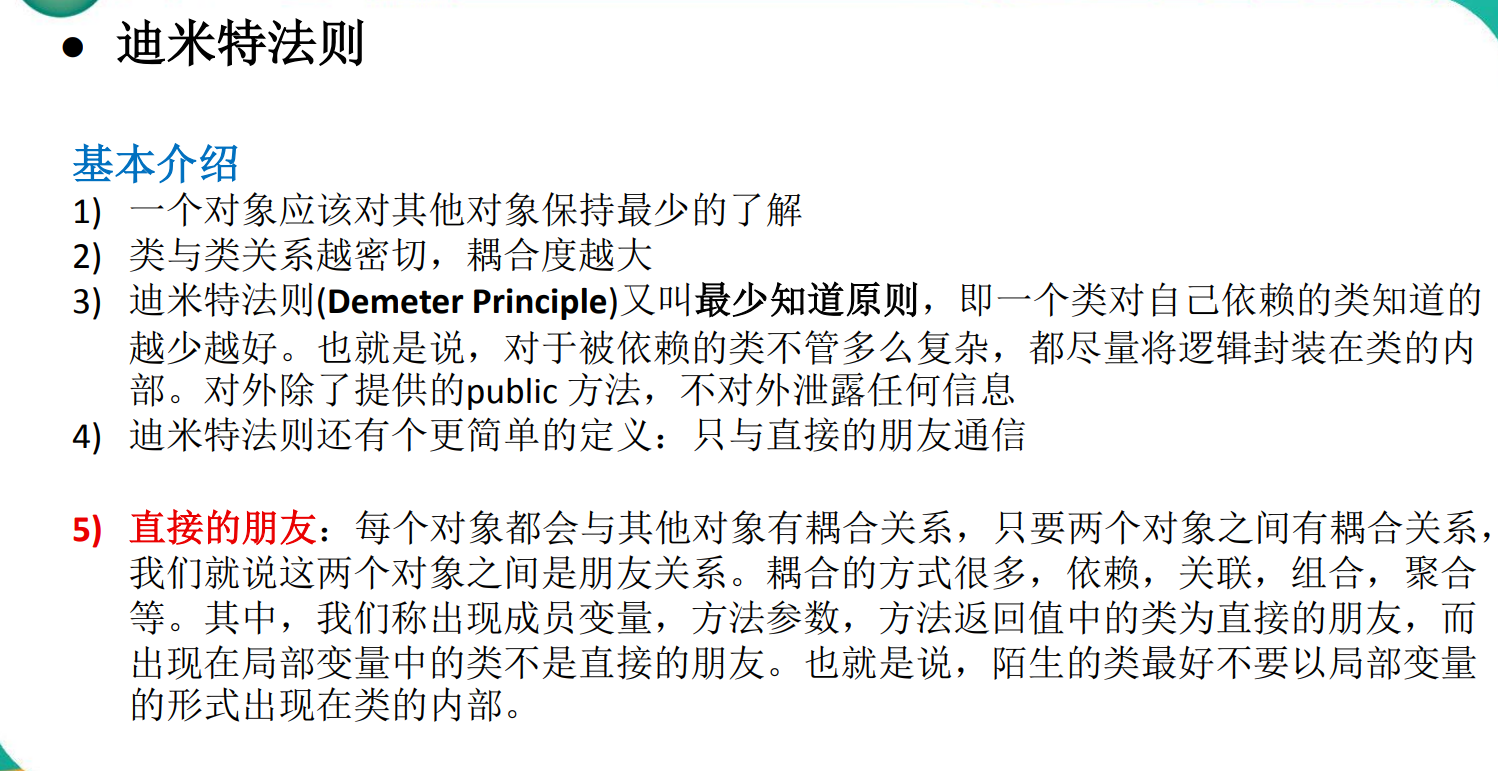

错误示例
package tanchishell.SJMS.demeter;
import java.util.ArrayList;
import java.util.List;
//客户端
public class Demeter1 {
public static void main(String[] args) {
//创建了一个 SchoolManager 对象
SchoolManager schoolManager = new SchoolManager();
//输出学院的员工 id 和 学校总部的员工信息
schoolManager.printAllEmployee(new CollegeManager());
}
}
//学校总部员工类
class Employee {
private String id;
public void setId(String id) {
this.id = id;
}
public String getId() {
return id;
}
}
//学院的员工类
class CollegeEmployee {
private String id;
public void setId(String id) {
this.id = id;
}
public String getId() {
return id;
}
}
//管理学院员工的管理类
class CollegeManager {
//返回学院的所有员工
public List<CollegeEmployee> getAllEmployee() {
List<CollegeEmployee> list = new ArrayList<CollegeEmployee>();
for (int i = 0; i < 10; i++) { //这里我们增加了 10 个员工到 list
CollegeEmployee emp = new CollegeEmployee();
emp.setId("学院员工 id= " + i);
list.add(emp);
}
return list;
}
}
//学校管理类
//分析 SchoolManager 类的直接朋友类有哪些 Employee、CollegeManager
//CollegeEmployee 不是 直接朋友 而是一个陌生类,这样违背了 迪米特法则
class SchoolManager {
//返回学校总部的员工
public List<Employee> getAllEmployee() {
List<Employee> list = new ArrayList<Employee>();
for (int i = 0; i < 5; i++) { //这里我们增加了 5 个员工到 list
Employee emp = new Employee();
emp.setId("学校总部员工 id= " + i);
list.add(emp);
}
return list;
}
//该方法完成输出学校总部和学院员工信息(id)
void printAllEmployee(CollegeManager sub) {
//分析问题
//1. 这里的 CollegeEmployee 不是 SchoolManager 的直接朋友
//2. CollegeEmployee 是以局部变量方式出现在 SchoolManager
//3. 违反了 迪米特法则
//获取到学院员工
List<CollegeEmployee> list1 = sub.getAllEmployee();
System.out.println("------------学院员工------------");
for (CollegeEmployee e : list1) {
System.out.println(e.getId());
}
//获取到学校总部员工
List<Employee> list2 = this.getAllEmployee();
System.out.println("------------学校总部员工------------");
for (Employee e : list2) {
System.out.println(e.getId());
}
}
}
输出
------------学院员工------------
学院员工 id= 0
学院员工 id= 1
学院员工 id= 2
学院员工 id= 3
学院员工 id= 4
学院员工 id= 5
学院员工 id= 6
学院员工 id= 7
学院员工 id= 8
学院员工 id= 9
------------学校总部员工------------
学校总部员工 id= 0
学校总部员工 id= 1
学校总部员工 id= 2
学校总部员工 id= 3
学校总部员工 id= 4
正确示例
package tanchishell.SJMS.demeter;
import java.util.ArrayList;
import java.util.List;
//客户端
public class Demeter2 {
public static void main(String[] args) {
//创建了一个 SchoolManager 对象
SchoolManager schoolManager = new SchoolManager();
//输出学院的员工 id 和 学校总部的员工信息
schoolManager.printAllEmployee(new CollegeManager());
}
}
//学校总部员工类
class Employee {
private String id;
public void setId(String id) {
this.id = id;
}
public String getId() {
return id;
}
}
//学院的员工类
class CollegeEmployee {
private String id;
public void setId(String id) {
this.id = id;
}
public String getId() {
return id;
}
}
//管理学院员工的管理类
class CollegeManager {
//返回学院的所有员工
public List<CollegeEmployee> getAllEmployee() {
List<CollegeEmployee> list = new ArrayList<CollegeEmployee>();
for (int i = 0; i < 10; i++) { //这里我们增加了 10 个员工到 list
CollegeEmployee emp = new CollegeEmployee();
emp.setId("学院员工 id= " + i);
list.add(emp);
}
return list;
}
public void printEmployee() {
//问题解决
//1. 这里的 CollegeEmployee 不是 SchoolManager 的直接朋友
//2. CollegeEmployee 是以局部变量方式出现在 SchoolManager
//3. 违反了 迪米特法则
//获取到学院员工
List<CollegeEmployee> list1 = this.getAllEmployee();
System.out.println("------------学院员工------------");
for (CollegeEmployee e : list1) {
System.out.println(e.getId());
}
}
}
//学校管理类
//分析 SchoolManager 类的直接朋友类有哪些 Employee、CollegeManager
//CollegeEmployee 不是 直接朋友 而是一个陌生类,这样违背了 迪米特法则
class SchoolManager {
//返回学校总部的员工
public List<Employee> getAllEmployee() {
List<Employee> list = new ArrayList<Employee>();
for (int i = 0; i < 5; i++) { //这里我们增加了 5 个员工到 list
Employee emp = new Employee();
emp.setId("学校总部员工 id= " + i);
list.add(emp);
}
return list;
}
//该方法完成输出学校总部和学院员工信息(id)
void printAllEmployee(CollegeManager sub) {
//获取到学院员工
sub.printEmployee();
//获取到学校总部员工
List<Employee> list2 = this.getAllEmployee();
System.out.println("------------学校总部员工------------");
for (Employee e : list2) {
System.out.println(e.getId());
}
}
}
输出
------------学院员工------------
学院员工 id= 0
学院员工 id= 1
学院员工 id= 2
学院员工 id= 3
学院员工 id= 4
学院员工 id= 5
学院员工 id= 6
学院员工 id= 7
学院员工 id= 8
学院员工 id= 9
------------学校总部员工------------
学校总部员工 id= 0
学校总部员工 id= 1
学校总部员工 id= 2
学校总部员工 id= 3
学校总部员工 id= 4
七、合成复用原则 🚑
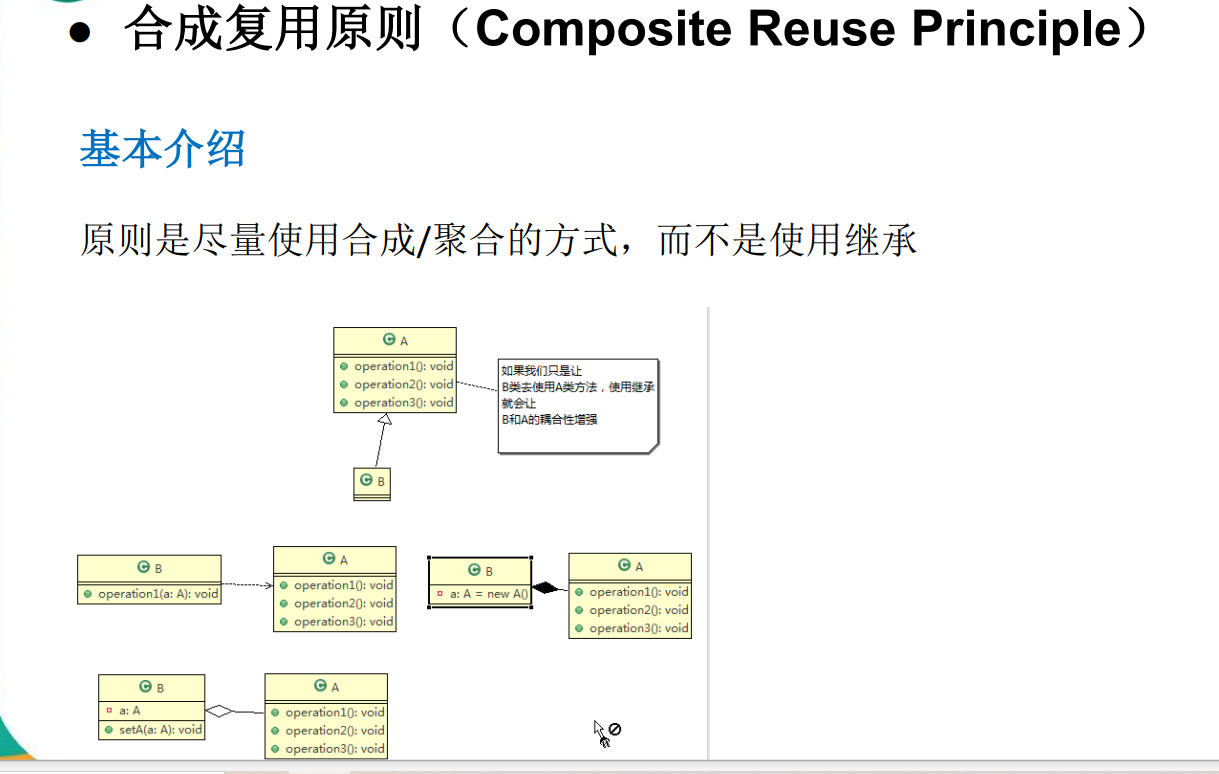
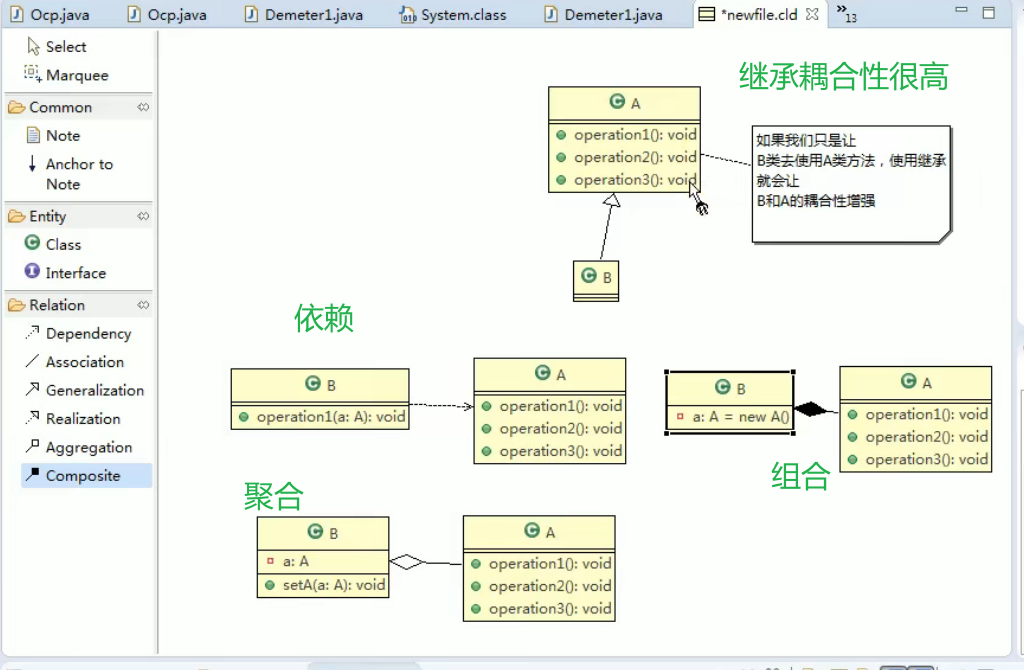
总结 : 设计原则核心思想 🔞



